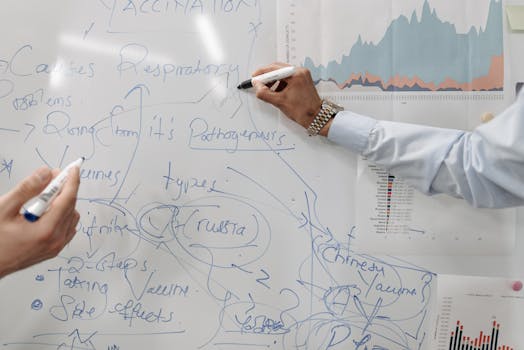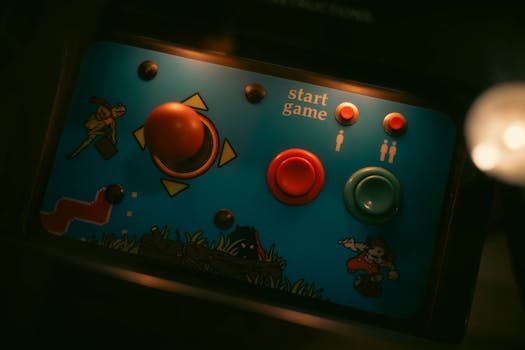Elevate Indie Game Development: 3D Animation Techniques and Game Animation Workflow Insights
Indie game developers face a lot of competition, and mastering 3D animation techniques gives them an edge. These skills help improve game quality and draw in more players. In this guide, we explore useful tips on game animation workflow, blend shapes for character expression, and other techniques to enhance audience engagement. By learning these methods, developers can create more immersive and appealing games.
Harnessing 3D Animation Techniques for Indie Game Success
To succeed in the competitive world of indie game development, you need solid 3D animation skills. 3D animation techniques help create immersive experiences that captivate players. When your visuals stand out, you can attract more attention than larger studios (who often have bigger budgets but not necessarily better ideas).
Key Takeaway: Mastering 3D animation gives indie developers an edge.
Understanding the basics of 3D animation is crucial. It involves creating movement and change in 3D digital models. This process can include rigging (setting up a skeleton for a model), animating (making it move), and rendering (producing the final image). When you master these techniques, you can create stunning visuals that draw players in.
Indie developers often face challenges in differentiating their games from those produced by major studios. Larger companies have teams of artists and animators, which can make their games look more polished. However, with the right skills and tools, indie developers can create high-quality animations that rival those of the big guys.
Checklist for Evaluating Your Animation Setup:
- Do you have a solid understanding of rigging and skinning?
- Are your animations smooth and natural?
- Have you experimented with different animation styles?
- Are you using the right software for your needs?
- Do you gather feedback from players to improve your animations?
By going through this checklist, you can pinpoint areas for improvement and enhance your overall animation quality.

Integrating Blend Shapes in Animation for Realistic Character Expression
Blend shapes are a powerful tool in animation that allows for realistic character expressions. Essentially, blend shapes let you create different versions of a model (like a character smiling, frowning, or showing surprise). By smoothly transitioning between these shapes, you can create lifelike expressions that enhance storytelling.
Key Takeaway: Blend shapes help characters express emotions, making them more relatable.
Many indie developers struggle with character animation, especially when trying to convey subtle facial movements. Without blend shapes, characters can appear stiff or unnatural. For example, simply moving a character’s mouth may not fully capture the emotion behind the words. Blend shapes can help solve this problem, adding depth to character interactions.
Case Study: An indie game called “Heartbound” features characters that use blend shapes effectively. The developers crafted various facial expressions that changed based on dialogue choices. This made the characters feel more alive and engaged players on a deeper emotional level.
Perfecting Animation Timing and Spacing: The Secret to Fluid Movement
For a comprehensive understanding of 3D animation techniques, developers can refer to 3D game development basics that provide foundational knowledge and valuable projects to enhance their skills.
Animation timing and spacing play critical roles in creating believable movements. Timing refers to how long an action takes, while spacing concerns the distance between movements. Together, they create a rhythm that makes animations feel natural.
Key Takeaway: Good timing and spacing enhance player immersion.
For example, if a character jumps, the timing of the jump (how quickly they rise and fall) and the spacing (how far they travel) will determine how realistic it feels. If the jump is too slow or too fast, it can break the player’s immersion.
Best Practices for Animation Timing and Spacing:
- Use reference videos to study real-life movements.
- Start with keyframes to define major positions.
- Add in-betweens to create smoother transitions.
- Pay attention to weight shift and momentum in actions.
Step-by-Step Guide:
- Determine the FPS (frames per second) for your game. Common values are 30 or 60 FPS.
- Sketch out keyframes for your animation (start, middle, end).
- Create in-between frames based on your keyframes, considering timing and spacing.
- Test the animation in your game engine to see how it feels. Adjust timing as needed. By focusing on timing and spacing, you can refine your animations and create a more engaging experience for players.

Streamlined Game Animation Workflow: From Sprite Animation Techniques to Physics-Based Animation Blending
Having a streamlined animation workflow can significantly boost your productivity as an indie developer. It ensures consistency across your animation sequences and makes managing your assets easier.
Key Takeaway: An efficient workflow saves time and enhances quality.
When starting with 2D games, sprite animation techniques are often used. This involves creating a series of images (sprites) that show different states of a character or object. However, as you transition to 3D, you can incorporate more advanced methods like physics-based animation blending. This allows for dynamic movements that react to the game environment.
Comparison: Traditional tools often require manual work for each animation, while modern tools can automate parts of the process. For instance, software like Unity offers powerful animation systems that let you blend different animations smoothly.
Best Practices for Game Animation Workflow:
Organize your animation assets clearly in folders.
Use version control to keep track of changes.
Regularly back up your work.
Gather feedback early and often to adjust animations.
Example Workflow Diagram:
- Planning: Sketch out animation ideas and list requirements.
- Asset Creation: Develop your models and textures.
- Animation: Rig models and create animations.
- Testing: Implement animations in the game engine and test them.
- Feedback: Gather player feedback and refine animations.
By following this structured approach, you can maintain high-quality animations throughout your development process.

Conclusion
In summary, mastering 3D animation techniques, leveraging blend shapes for character expressions, fine-tuning timing and spacing, and adopting a streamlined animation workflow are essential steps for indie game developers. These techniques can significantly elevate your game’s quality and enhance player engagement.
As you continue to refine your animation skills, remember that practice and feedback are key. Don’t hesitate to reach out to the community, share your work, and learn from others. Happy animating!
FAQs
Q: I’ve been working with sprites in my game and I’m curious—what are some effective ways to integrate 3D animation with my existing sprite workflow without losing consistency in style or performance?
A: To effectively integrate 3D animation with your existing sprite workflow, consider using a layered approach where 3D backgrounds and elements enhance the visuals while keeping your 2D sprites for characters and interactive objects. This method maintains stylistic consistency and can help optimize performance by reducing file sizes, allowing you to leverage the advantages of both 2D and 3D without compromising on quality.
Q: When I incorporate blend shapes for character expressions, what are some best practices to ensure that the deformations look natural and work well throughout my game animation pipeline?
A: When incorporating blend shapes for character expressions, ensure that the base mesh is well-formed with evenly distributed polygons to allow for smooth deformations. It’s also essential to create blend shapes that start and end in natural poses, and to test them in various animations to confirm they work seamlessly with cyclic and action animations, maintaining the character’s overall look and feel.
Q: I often struggle with getting the timing and spacing right in my 3D animations, especially when trying to blend them with physics-based movements—what techniques can help make these transitions feel smooth and believable?
A: To achieve smooth transitions in 3D animations blending with physics-based movements, focus on using follow-through and delayed secondary actions. Ensure that your key poses are well-timed and that the animations smoothly blend into one another, allowing for natural momentum and flow, which can be enhanced through motion capture techniques.
Q: My current animation workflow feels a bit disjointed when switching between different techniques; what strategies can I use to streamline my process while combining elements like traditional frame-by-frame methods and modern game animation practices?
A: To streamline your animation workflow, consider creating a consistent pipeline that integrates both traditional frame-by-frame techniques and modern game animation practices, such as utilizing sprite sheets for 2D animations and bone structures for 3D models. Additionally, focus on setting up a modular system where animations can be easily swapped or blended, allowing for smoother transitions and reusability across different projects.
